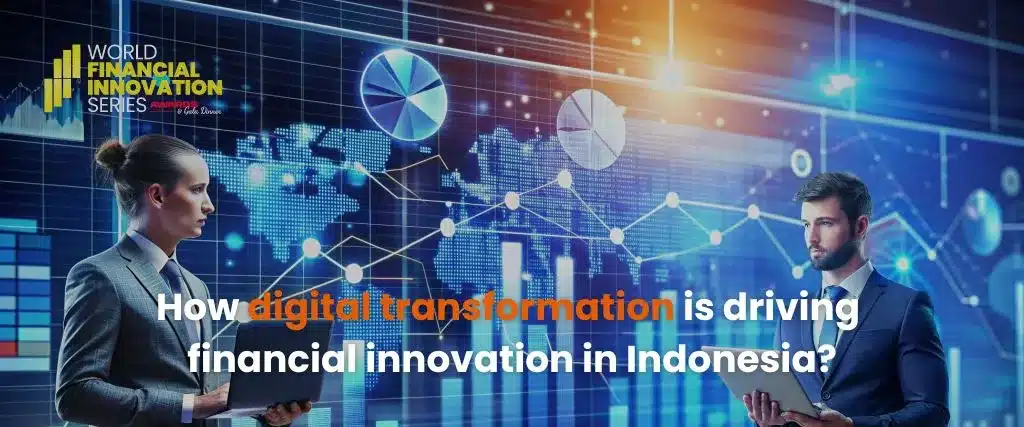
Indonesia’s financial sector is taking massive digital leaps every year. So much so that global technology players are evaluating the sector for expansive growth. While it is a known fact that Indonesia is Southeast Asia’s largest economy, the archipelago’s financial sector is now embracing digital transformation to facilitate the best of financial innovations.
With more than 280 million people residing in the country wherein above 210 million are labelled as internet users, Indonesia is also known for housing one of the highest numbers of internet users in the world. The above fact is considered to be the biggest contributing factor for the growth of fintech in the country. Not to forget, the supportive regulatory framework coupled with increasing internet penetration is only adding to the favourable environment for the growth of fintech. This not only has improved accessibility and efficiency but has helped in bridging the financial inclusion gap.
It is an evident fact that the archipelago’s traditional financial system has failed to serve the entire population, and the country still houses a heavy number of underbanked and unbanked communities. Over the years, this fact alone has been a major hindrance to the nation’s economic growth.
However, the situation is now changing with the advent of digital transformation which has opened a wide rift for fintech players to enter the lucrative market alongside aiding financial institutions in incorporating the latest technologies.
Digital banking, insurtech, blockchain technology, AI & ML, peer-to-peer lending platforms and myriad other developments have taken the delivery of financial services to new heights. Millions from the underprivileged sector now have access to financial services.
1. Mobile Banking and E-Wallets
Mobile banking and e-wallets are perhaps the most visible signs of financial innovation in Indonesia. Platforms such as GoPay, OVO, and Dana have revolutionized how people transact, allowing them to transfer money, pay bills, and make purchases seamlessly from their smartphones. These platforms, integrated into popular ride-hailing apps and e-commerce sites, have gained rapid adoption, particularly among younger, tech-savvy consumers.
Digital wallets and payment solutions have been pivotal in driving financial inclusion. Many Indonesians who were once unbanked now have access to payment services that don’t require traditional bank accounts, bridging the gap between the formal and informal financial sectors.
2. Peer-to-Peer (P2P) Lending
Indonesia’s growing fintech ecosystem has also seen the rise of peer-to-peer lending platforms such as Investree, Modalku, and KoinWorks. These platforms allow individuals and small businesses to access loans without the need for a traditional bank. P2P lending has provided much-needed capital for small and medium-sized enterprises (SMEs), which are the backbone of Indonesia’s economy.
Thanks to digital transformation, P2P lending platforms utilize data-driven algorithms and advanced credit scoring to assess borrowers’ creditworthiness, even in the absence of traditional credit histories. This innovative approach is making it easier for SMEs and individuals to access financial support, thereby fueling economic growth.
3. Blockchain and Digital Currencies
Indonesia has been exploring blockchain technology to enhance transparency and security in financial transactions. While blockchain adoption is still in its early stages, it holds enormous potential for the country’s financial sector. Digital transformation is enabling the integration of blockchain solutions in areas such as supply chain financing, cross-border remittances, and secure payments.
Furthermore, with the rise of cryptocurrencies and digital currencies, Indonesia’s central bank has been exploring the possibility of issuing a Central Bank Digital Currency (CBDC). This move could further drive the modernization of the country’s financial infrastructure and facilitate more efficient payment systems.
The Indonesian government has played a pivotal role in enabling digital transformation in the financial sector. Initiatives such as the National Payment Gateway (NPG) and the Digital Banking Roadmap 2020-2025 aim to foster the development of digital financial services while ensuring a secure and stable environment for innovation.
In addition, the Financial Services Authority (OJK) and Bank Indonesia have introduced a regulatory sandbox that allows fintech companies to test their solutions under the supervision of regulators. This framework encourages experimentation while mitigating risks, ensuring that financial innovation can thrive within a safe and well-regulated ecosystem.
While Indonesia’s financial sector is benefiting greatly from digital transformation, challenges remain. Cybersecurity threats, digital literacy gaps, and regulatory hurdles are ongoing concerns that need to be addressed. Financial institutions must continue investing in robust security measures to protect consumers, while the government and private sector must work together to improve digital literacy, particularly in remote areas.
Despite these challenges, the future of Indonesia’s financial industry looks promising. As digital transformation continues to drive financial innovation, Indonesia is well-positioned to become a major player in the global fintech landscape.
Conclusion
Digital transformation is revolutionizing Indonesia’s financial industry, making it more inclusive, efficient, and innovative. From mobile banking and peer-to-peer lending to blockchain technology, the country is at the forefront of financial innovation in Southeast Asia. With ongoing support from the government, fintech startups, and financial institutions, Indonesia is poised to further unlock the potential of its digital economy. As the pace of digital transformation accelerates, Indonesia’s financial sector will continue to evolve, creating new opportunities for growth and inclusion.